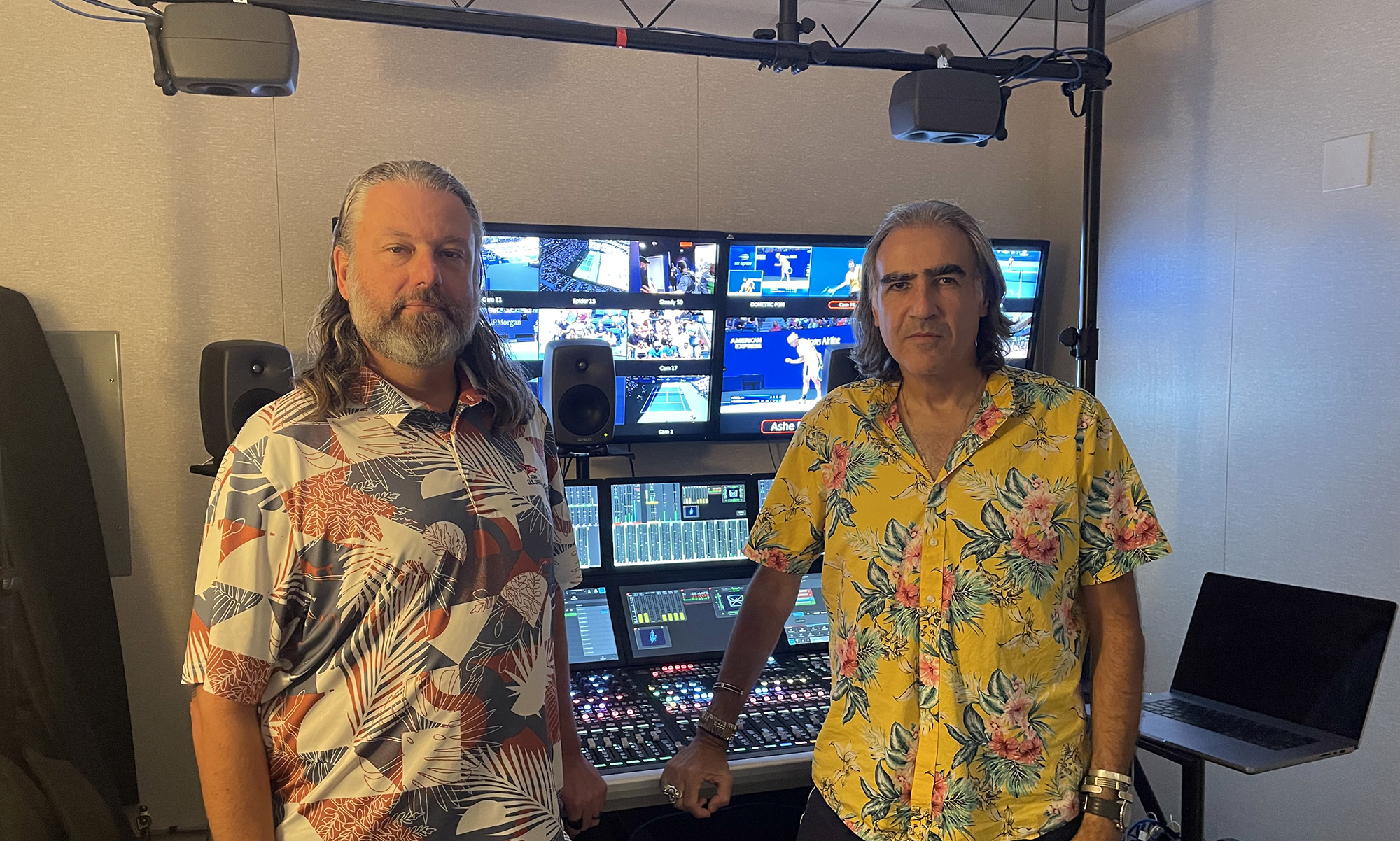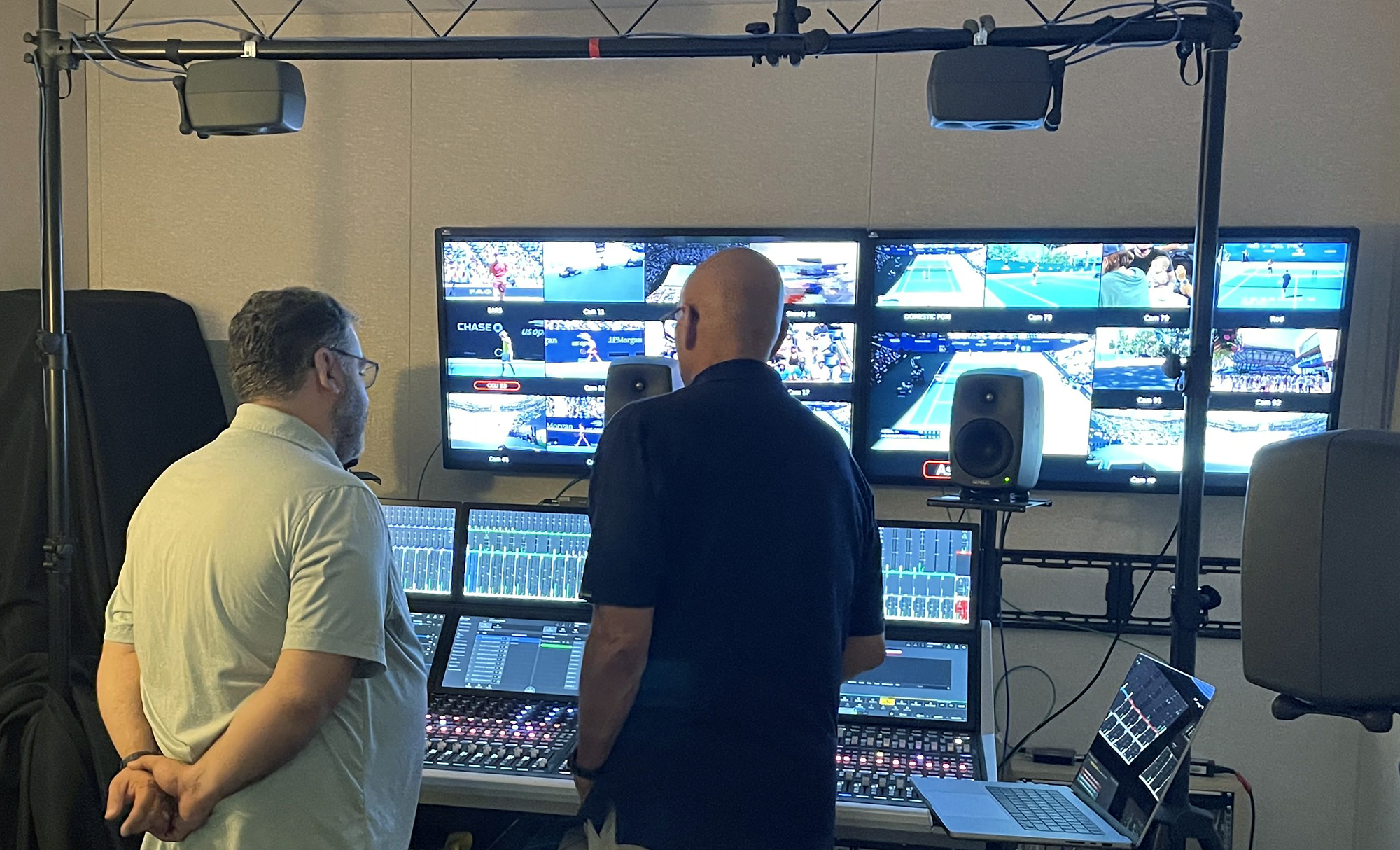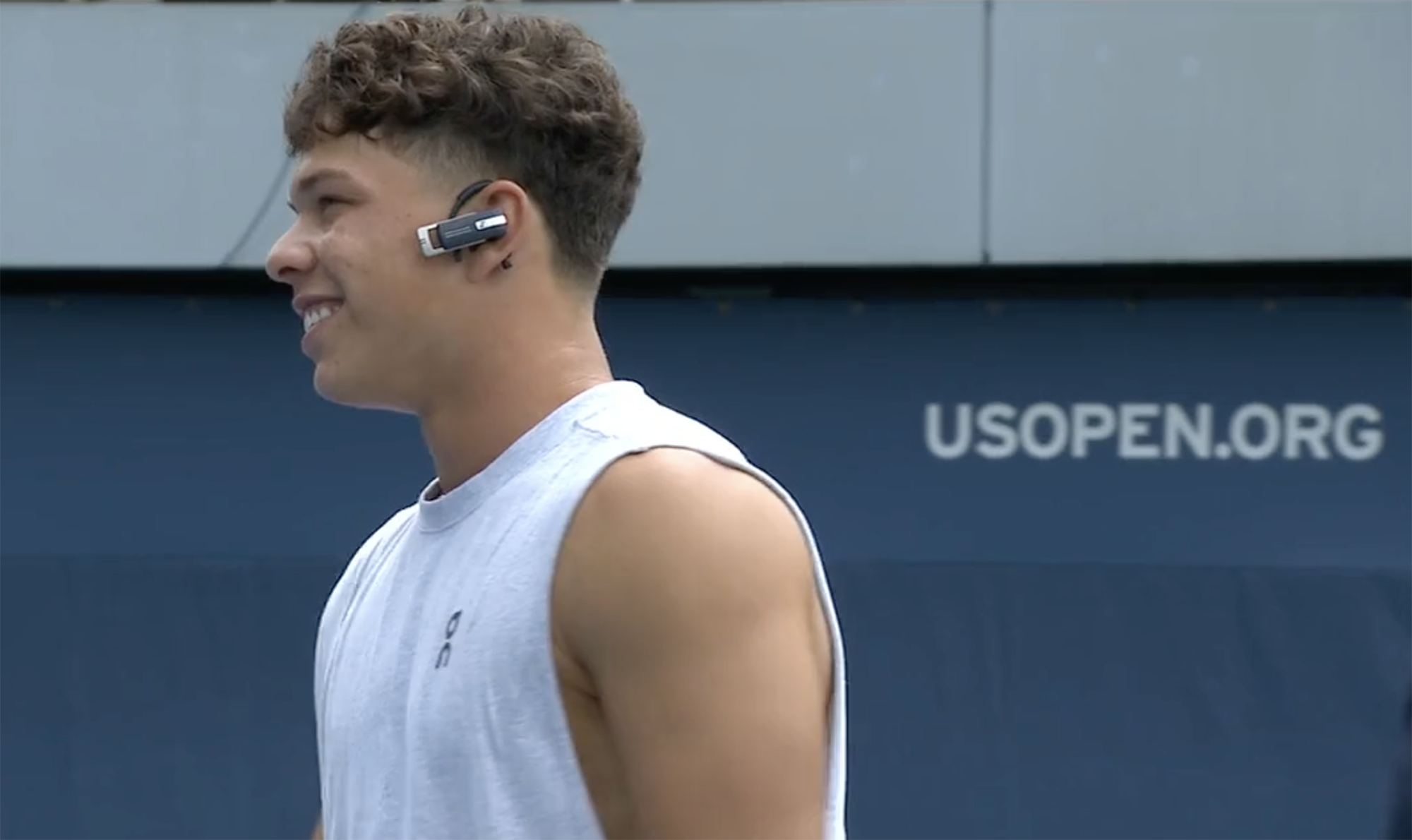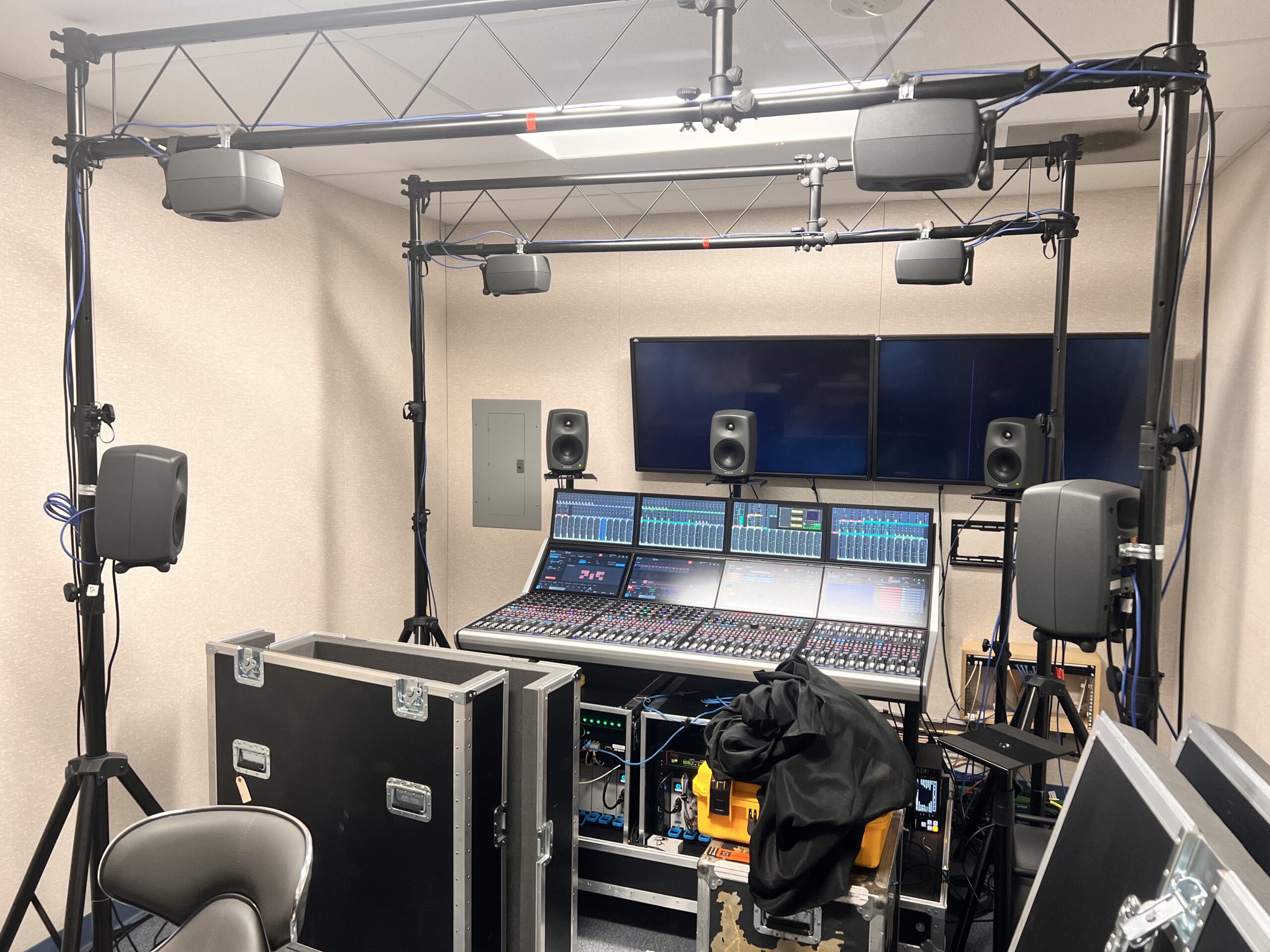Live From US Open 2023: ESPN Takes Audio Even Closer to the Net — and the Drama
The broadcaster and Dolby move the Atmos needle a bit further as well
Story Highlights
People used to complain about how the roof of Arthur Ashe Stadium, the central venue at the USTA Billie Jean King National Tennis Center, acts as a massive parabolic reflector, amplifying the impact of rain from without and the din of the crowd within. But Florian Brown, longtime co-audio supervisor for the event with colleague Leonard Fisher, would set them straight.
“Our view is always to document the experience,” Brown explains. “We’re not trying to get rid of anything or hide anything. Over the years, we’ve had several players say that they can’t hear the ball; it’s the same when the crowd is unimpressed with [a play] and the murmur goes up. But it’s part of the New York experience, and we’re just documenting it.”

ESPN’s Florian Brown (left) and Leonard Fisher are once again overseeing the sounds of the US Open for ESPN this year.
Viewers may even find some aural comfort in the familiar rumble of the 7 train passing nearby and jets taking off from LaGuardia Airport. But, this year, there’s a lot more to listen for in the venue. Besides deploying more microphones around the Billie Jean King Tennis Center than ever before, including near towel racks and in practice areas, ESPN is getting in closer to the tennis players themselves.
Bluetooth for Close-Up Sound
The primary technique is the use of the Bluetooth capability on Riedel Bolero beltpacks, which allow a Bluetooth-enabled headset — in this case, a Sennheiser Presence earpiece — to be connected wirelessly. Once they’re in place, Brown says, a new avenue is opened to close-up sound for tennis.
“We did some at Wimbledon, and golf has been using it, too,” he explains. “We’ve been handing out Bluetooth transmitters, following [players] around with the Bolero, and basically talking to them while they’re practicing and hitting balls. It sounds good, and everyone seems comfortable with it. It’s very unobtrusive, so the athletes are a little less defensive as they’re talking, because they can stay focused on hitting the ball.”
The stealthiness of this audio-capture combination has helped ease player attitudes toward being miked, always a challenge for broadcast-sports audio.
“We interviewed a bunch of [tennis players] at Wimbledon, and they all had good games afterwards. So the mojo has been positive,” Brown laughs. “It doesn’t bring bad luck or something. Everyone has done really well, and, yeah, everyone has been loving it.”
He acknowledges potential risks in integrating consumer products and systems into a broadcast. These include range issues — Bluetooth’s typical usable range is about 33 ft., far less than the usual distances for RF systems — which he says can get more complicated as the number of Bluetooth users in the group increases. On the other hand, it’s the gaggle effect that’s proving so engaging.
“Like this morning,” he recalled during a break in the broadcaster’s setup at the spacious control center, “we had four people on the practice set, plus two players wearing the earpieces and a sideline reporter on an RF mic standing around the practice court and having a chat. The two [players] can hear each other hitting the ball back and forth. They can hear our practice set asking questions, our sideline reporter asking questions, so it’s like a seven-way conversation.
“Two of those people are on Bluetooth while practicing,” he continues. “Hearing them, their exertion, the way they’re hitting, and the way they have to concentrate between what they’re talking about and hitting the ball — it’s all really interesting. Viewers are going to enjoy it. It brings a certain level of intimacy that, to be honest, we’ve been missing. Especially for tennis, where, unlike baseball or football, it’s hard to find a good spot for a bodypack on a player.”
At the control center, A1s Pete Adams and Jayson Polanski work at a pair of the nine Calrec consoles, sharing a Hydra network. They are part of a corps of an estimated 40 A1s and A2s on the US Open broadcast.
Atmos Helps Produce 5.1.4 Audio
Dolby Atmos is part of the mix at the US Open, with coverage from Arthur Ashe Stadium produced in UHD with enhanced 5.1.4 audio. ESPN does not have the necessary distribution infrastructure in place, but both DirecTV and UK’s Sky TV take a 5.1.4 feed from the two-story main control complex. ESPN delivers the feed to the USTA, which supplies it to interested rightsholders.
“It’s going out as channel-based immersive, probably in an SDI format to any of the rightsholders who want to take it that way,” says Glenn Stilwell, Dolby’s rep at the US Open. He adds that the Atmos mixing process itself has reached a mature level and that the challenges going forward are around distribution. “It’s really about infrastructure, about the reliable transport of the signal to someplace that can use it, which at this point is mainly international.”
He points out that Atmos is being used for one or two college-football games and one basketball game per week in the U.S., distributed by DirecTV, the only MVPD with the 10-channel PCM/SDI infrastructure to handle that format.
“We experimented with [Atmos here] about three years ago,” says Brown. “It went really well; it sounded amazing. This is, I believe, a venue that lends itself to Atmos because we’re able to get in the catwalk, lower microphones from it, and put them where they should be to get a true overhead capture of the event.”
Atmos’s presence this year is being augmented by enhanced QC measures. An Atmos-capable soundbar and DolbyVision–equipped television allow audio supervisors to keep an eye and an ear on the 5.1.4 mix. “It’s all about little steps at a time,” says Stilwell, “just moving the needle forward a bit at a time.”

Chris Fichera, VP, Group One Ltd. (right) providing test runs at the US Open on Calrec’s new Argo work surface.
The US Open is also a test-drive opportunity for Calrec’s new Argo work surface. The company has set up its own control room, fitted with Genelec 8320 and 8330 monitoring, adjacent to the main control area.
Chris Fichera, VP, Group One Ltd., which distributes Calrec, sees the US Open as “a great opportunity to introduce the Argo to the A1 community, who don’t get to attend all of the trade shows for demos.”
Brown says the additional microphones and enhanced access to players in different areas of the campus, as well as recently relaxed restrictions around coaching during play, add to the Open’s narrative: “It’s letting us get as close and intimate — and into the drama — as possible.”


